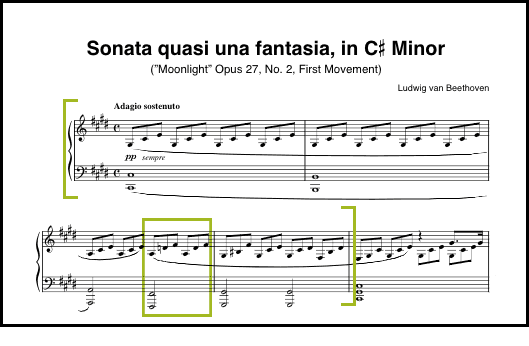What Are Neapolitan Chords in Music Theory?
Read our guide on neapolitan chords in music theory, what they mean, functions, contexts, and samples to help you better understand and apply them.

If you’ve ever read a Roman numeral analysis or chord sheet and stumbled upon an “N” or “N6,” don’t worry–you’re not seeing things! The “N” likely stands for a Neapolitan Chord, and no, we’re not talking about the delicious ice cream. In music theory, a Neapolitan chord is a major chord built on the lowered second scale degree in a scale. It can also be labeled as “♭II,” indicating a flatted major two chord.
What does “Neapolitan” mean?
The chord is named “Neapolitan” because it is thought to be created by the Neapolitan School, a group associated with opera in the 17th and 18th century. The best-known composer from this school is Alessandro Scarlatti, although the Neapolitan chord can be found in compositions before his time in the works of Henry Purcell, Giacomo Carissimi, and Arcangelo Corelli.
The First Inversion

The Neapolitan chord is almost always in the first inversion. To quickly review, triads are made up of a root, a third, and a fifth. A first inversion chord indicates that the third is in the lowest position, while a second inversion chord indicates that the fifth is in the lowest position.
Because the Neapolitan chord is typically in first inversion, it is often referred to as the “Neapolitan Sixth,” labeled as N6 or ♭II6. Remember that in Roman numeral analysis, first inversion chords are represented by a 6, while second inversions chords are represented by 6/4.

The Function of the Neapolitan Chord
In harmony, the function of the Neapolitan chord is to prepare the dominant, substituting either the IV or the ii chord. This makes its function “predominant,” because it comes before the dominant. Recall that the dominant chord is the major chord built on scale degree five of a major or minor scale.
Let’s look at the Neapolitan Chord in a progression. Listen to the excerpt by clicking the play button below.

Let’s take the same example and hear it first with a naturally occuring ii chord, then a IV chord, and finally, the Neapolitan chord again.

You can now hear how unique the harmony of a Neapolitan chord is compared to naturally occurring chords. Because of its specific sound, these chords are quite recognizable in music.
The Neapolitan Chord In Context
Neapolitan chords show up all over popular music. Believe it or not, a Neapolitan chord can be found in the opening sequence of the famous piano piece, “Moonlight Sonata” by Ludwig Van Beethoven. Follow along in the sheet music below as you listen for the Neapolitan chord in measure three.

We hope you now feel a little more comfortable with Neapolitan chords. Once you get the hang of them, you’ll begin to see them pop up all over your sheet music. Maybe you can even experiment with putting a Neapolitan chord in one of your own compositions!
For more music theory help, click here.
Related Products:

